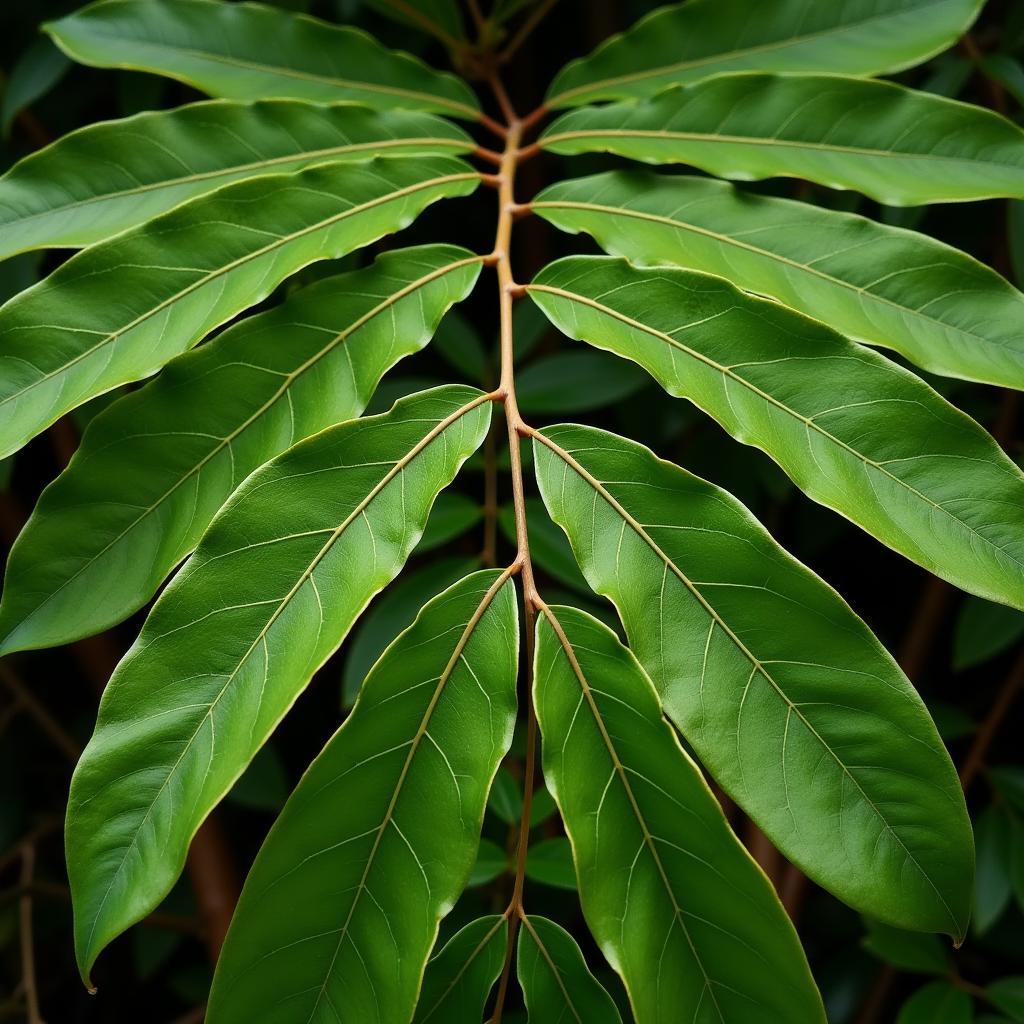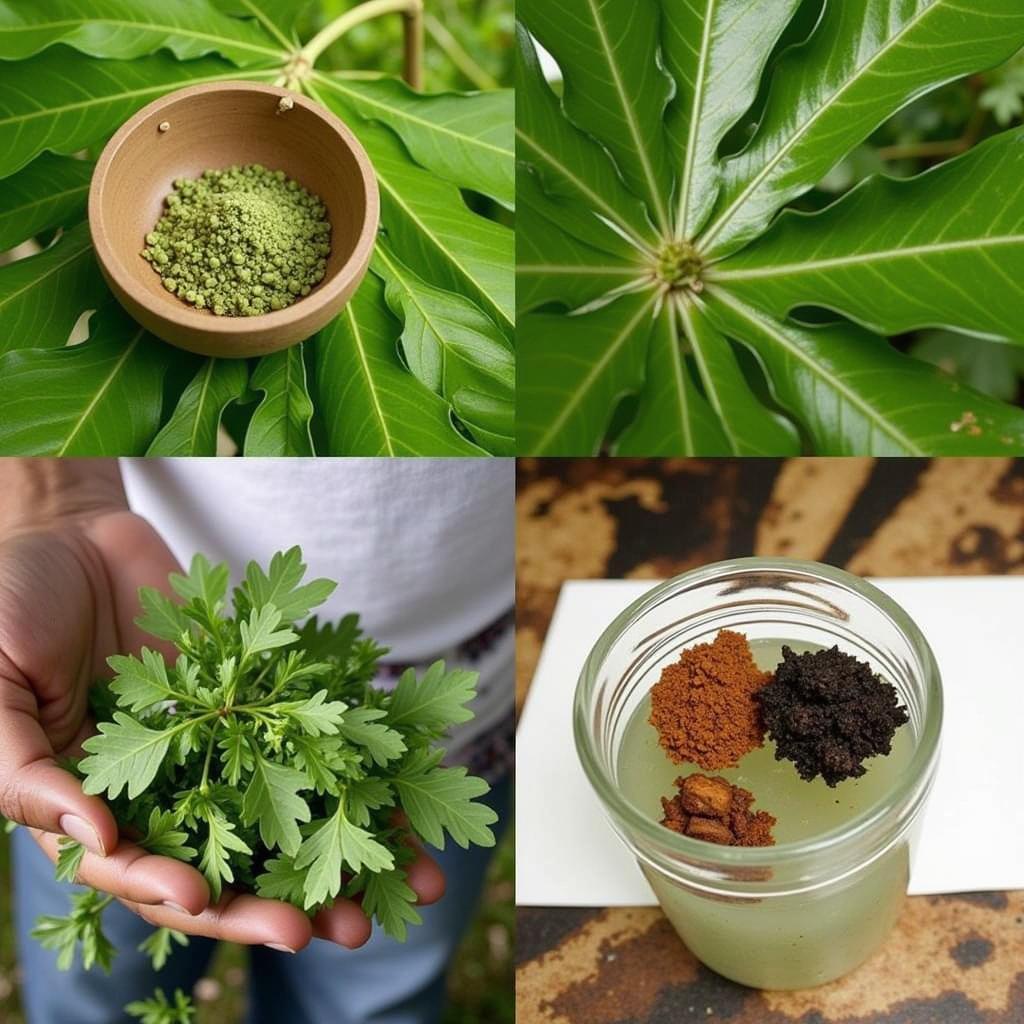African Blackwood Tree Leaves: A Closer Look at the Dalbergia melanoxylon Foliage
The African Blackwood Tree Leaves, belonging to the Dalbergia melanoxylon species, are more than just simple foliage. They represent a vital part of a tree prized for its dense, dark heartwood, used in crafting high-end musical instruments and furniture. Understanding the characteristics and significance of these leaves offers a deeper appreciation for the tree’s role in various ecosystems and cultures.
Unveiling the Secrets of African Blackwood Tree Leaves
The leaves of the African blackwood tree are compound, meaning they consist of multiple leaflets stemming from a central stalk. These leaflets are typically small, oval-shaped, and arranged alternately along the rachis. Their color ranges from a vibrant green in the new growth to a darker, more subdued green as they mature. The leaves play a crucial role in the tree’s photosynthetic process, converting sunlight into energy and providing sustenance for its growth. This seemingly simple function has far-reaching implications for the surrounding ecosystem, contributing to oxygen production and providing shade for other plants and animals. After the initial introduction of the tree to other regions, like India, its leaves have adapted to different climate conditions. Similar adaptation has also been observed in the African ebony tree seeds.
One notable aspect of the African blackwood tree’s foliage is its deciduous nature. In response to dry seasons or environmental stress, the tree sheds its leaves as a survival mechanism. This allows the tree to conserve water and energy, waiting for more favorable conditions to return. This adaptation is especially crucial in its native African habitats, where periods of drought can be common.
 Close-up view of African blackwood tree leaves showing details of leaflets and rachis
Close-up view of African blackwood tree leaves showing details of leaflets and rachis
The Significance of African Blackwood Leaves in Traditional Medicine
Beyond their ecological role, African blackwood tree leaves hold a significant place in traditional medicine across several African communities. They are often used in remedies for various ailments, demonstrating a deep connection between nature and healing. While scientific research on these traditional uses is still ongoing, the long-standing practices speak to the perceived medicinal properties of the leaves.
For generations, communities have utilized different parts of the African blackwood tree, including its leaves, in their traditional practices. This demonstrates a deep understanding of the plant’s properties and its potential benefits. You might be interested in exploring how African crafts in Uganda incorporate this valuable tree.
 African Blackwood leaves being used in traditional medicine preparation
African Blackwood leaves being used in traditional medicine preparation
How to Identify African Blackwood Tree Leaves
Recognizing African blackwood tree leaves involves observing several key features:
- Compound Structure: Look for the multiple leaflets branching from a central stem.
- Leaflet Shape and Arrangement: Observe the small, oval shape of the leaflets and their alternating arrangement.
- Color: Note the vibrant green of new leaves and the darker green of mature leaves.
These characteristics distinguish African blackwood tree leaves from other similar species. The unique qualities of the tree, including its leaves and valuable heartwood, have led to its cultivation in other regions. You can learn more about African blackwood plantation in India.
African Blackwood Tree Leaves: Frequently Asked Questions
What is the role of African Blackwood leaves in the ecosystem?
African Blackwood leaves play a crucial role in photosynthesis, oxygen production, and providing shade.
Are African Blackwood tree leaves used in traditional medicine?
Yes, they are used in some African communities for various remedies.
What are the key characteristics for identifying African Blackwood leaves?
Look for compound structure, oval-shaped leaflets arranged alternately, and their characteristic green color.
Conclusion
The African blackwood tree leaves, while often overlooked, play a crucial role in the tree’s survival and its interaction with the surrounding environment. From photosynthesis to traditional medicine, these leaves represent a vital component of a tree valued for both its ecological and cultural significance. Understanding the characteristics and uses of African blackwood tree leaves enhances our appreciation for the intricate connections within the natural world.
Dr. Anika Kwame, a renowned botanist specializing in African flora, states, “The African blackwood tree’s ability to shed its leaves during dry periods is a testament to its remarkable adaptability, allowing it to thrive in challenging environments.” Another expert, Professor Jabari Olumide, adds, “The traditional medicinal uses of the leaves highlight the rich ethnobotanical knowledge within African communities.”
Need assistance? Contact us 24/7: Phone: +255768904061, Email: [email protected], or visit us at Mbarali DC Mawindi, Kangaga, Tanzania.
What other questions do you have about the African Blackwood tree? Explore more articles on our website related to African flora and fauna.


